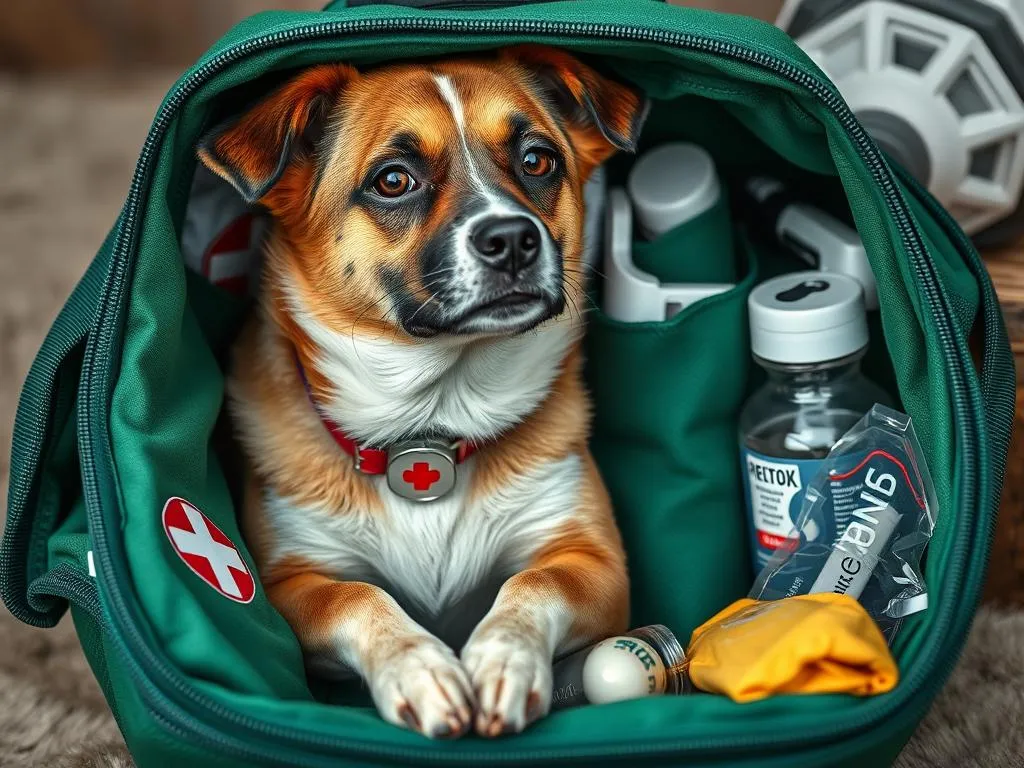
Introduction
Dog health care is a critical aspect of responsible pet ownership. Just like humans, dogs can experience injuries and emergencies that require immediate attention. Having a well-prepared first aid kit can mean the difference between a minor incident and a major health crisis. Did you know that approximately 1 in 10 dogs experience an injury that requires veterinary assistance every year? From cuts and scrapes to allergic reactions and more serious conditions, being prepared can alleviate stress and potentially save your dog’s life.
This guide will focus on what to put in a dog first aid kit, ensuring that you have everything necessary to handle common emergencies effectively.
Understanding the Basics of Dog First Aid
What is a Dog First Aid Kit?
A dog first aid kit is a collection of supplies and equipment designed to assist in the case of a medical emergency involving your pet. Unlike a standard human first aid kit, a dog first aid kit should be tailored to meet the specific needs of dogs, taking into account their unique physiology and common health issues.
Why Every Dog Owner Needs One
Emergencies can happen at any time, whether you’re at home, on a walk, or traveling. Being prepared can save you valuable time and reduce stress during critical moments. Furthermore, having a first aid kit can potentially save you money by allowing you to handle minor injuries at home instead of rushing to the vet for every little scrape or cut.
Essential Items to Include in a Dog First Aid Kit
Basic Medical Supplies
-
Adhesive Bandages: These can be used to cover small wounds. Choose bandages that are flexible and can adhere well to fur.
-
Gauze Pads and Rolls: Essential for controlling bleeding and protecting wounds. Ensure you have various sizes to accommodate different types of injuries.
-
Medical Tape: This is crucial for securing gauze and bandages. Choose a hypoallergenic option to avoid skin irritation.
First Aid Tools
-
Scissors: Opt for rounded-tip scissors to prevent accidental cuts. These are useful for cutting tape, gauze, or even fur if needed.
-
Tweezers: These are vital for removing splinters, ticks, or any foreign objects lodged in your dog’s skin.
-
Digital Thermometer: Knowing your dog’s normal temperature can help you assess their health. A digital thermometer designed for pets is the best choice for accuracy.
Medications
-
Antihistamines: Consult with your vet to find safe options for allergic reactions. Benadryl is commonly used but should be dosed correctly based on your dog’s weight.
-
Hydrogen Peroxide: Useful for inducing vomiting in certain poisoning cases, but should only be used under veterinary guidance.
-
Activated Charcoal: This can help absorb toxins in the case of poisoning. Again, it’s crucial to consult with a vet before use.
Emergency Items
-
Muzzle: Even the gentlest dogs may bite when in pain. A muzzle can be a helpful safety tool during emergencies.
-
Leash and Collar: Always have an extra set on hand. In emergencies, you may need to secure your dog quickly.
-
Emergency Blanket: Useful for keeping your dog warm in shock or cold weather, these blankets are lightweight and easy to store.
Health Monitoring Tools
-
First Aid Manual: A handy resource for quick reference during an emergency. Look for manuals specifically geared towards dog first aid.
-
Pet First Aid App: These apps provide guidance and resources at your fingertips, making them incredibly useful in a pinch.
Specialized Items for Specific Needs
For Active Dogs
-
Ice Packs: These are essential for treating sprains or swelling. Always wrap them in a cloth to prevent direct contact with the skin.
-
Heat Packs: For muscle strains, applying heat can help ease discomfort. Ensure you monitor the temperature to avoid burns.
For Senior Dogs
-
Joint Support Supplements: Keep a supply of glucosamine or other joint support medications for older dogs.
-
Senior-Specific Medications: Maintaining a supply of any medications your senior dog may need is essential for their health.
For Dogs with Chronic Conditions
-
Diabetes Supplies: If your dog is diabetic, include insulin and monitoring tools in your kit.
-
Allergy Medications: For dogs prone to allergies, having specific medications readily available can be a lifesaver.
How to Assemble Your Dog First Aid Kit
Choosing the Right Container
Selecting the right container for your dog first aid kit is crucial. A portable, waterproof, and durable container is ideal for both home and travel use. Consider using a hard-shell case that can withstand being jostled around.
Organizing the Kit
Categorizing items can help you quickly find what you need during an emergency. Use small bags or compartments within your kit to separate medical supplies, tools, medications, and emergency items. Label each section for easy access.
Regular Maintenance
A first aid kit is only effective if it’s stocked and ready to use. Make it a habit to check expiration dates on medications and supplies regularly. Replace any expired items and restock as needed to ensure your kit is always ready for action.
Tips for Using Your Dog First Aid Kit
Basic First Aid Techniques
Familiarize yourself with basic first aid techniques for dogs. This includes knowing how to apply pressure to stop bleeding, how to bandage a wound, and techniques for safely restraining your pet if they are in pain. Staying calm during emergencies is essential for both you and your dog.
When to Seek Professional Help
Not every situation can be handled at home. Be aware of signs that require immediate veterinary attention, such as difficulty breathing, excessive bleeding, or unresponsiveness. Knowing how to transport your dog safely to a vet is also crucial; having a sturdy crate or harness can make the process smoother.
Additional Resources
Recommended Books and Websites
There are numerous resources available for further reading on dog first aid. Books written by veterinarians or animal behaviorists can provide invaluable knowledge. Websites dedicated to pet care often have sections devoted to first aid that can enhance your understanding and preparedness.
Local Veterinary Services
Establishing a relationship with your local vet can provide peace of mind. They can offer advice on the specific needs of your dog and recommend any additional items to consider for your first aid kit. Knowing your local emergency services can also save precious time in a crisis.
Conclusion
Assembling a well-stocked dog first aid kit is an essential step in proactive dog health care. By ensuring that you have the right supplies and knowledge, you can be prepared for a variety of emergencies. Taking the time to prepare today can lead to a healthier and happier life for your furry friend.
FAQs
What should I include in my dog first aid kit?
Your dog first aid kit should include essential medical supplies, first aid tools, medications, emergency items, and health monitoring tools.
How do I know if I should use the medications in my kit?
Always consult your veterinarian before administering any medications to ensure they are safe and appropriate for your dog’s specific condition.
How often should I check my dog first aid kit?
You should check your dog first aid kit at least every six months to ensure all items are stocked and not expired.
What is the best way to transport my dog in an emergency?
Use a sturdy crate or a harness designed for car safety to transport your dog to the vet safely.









